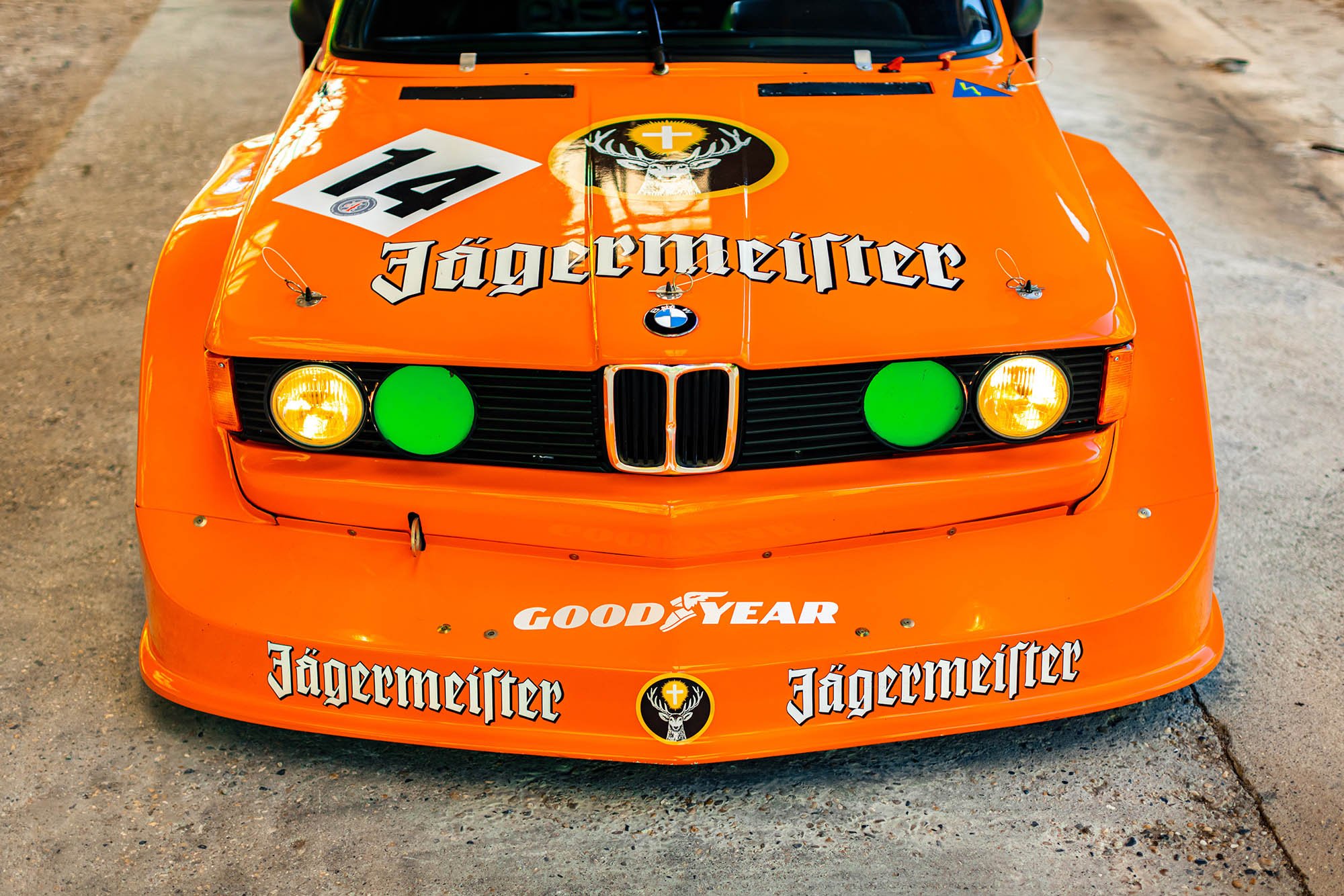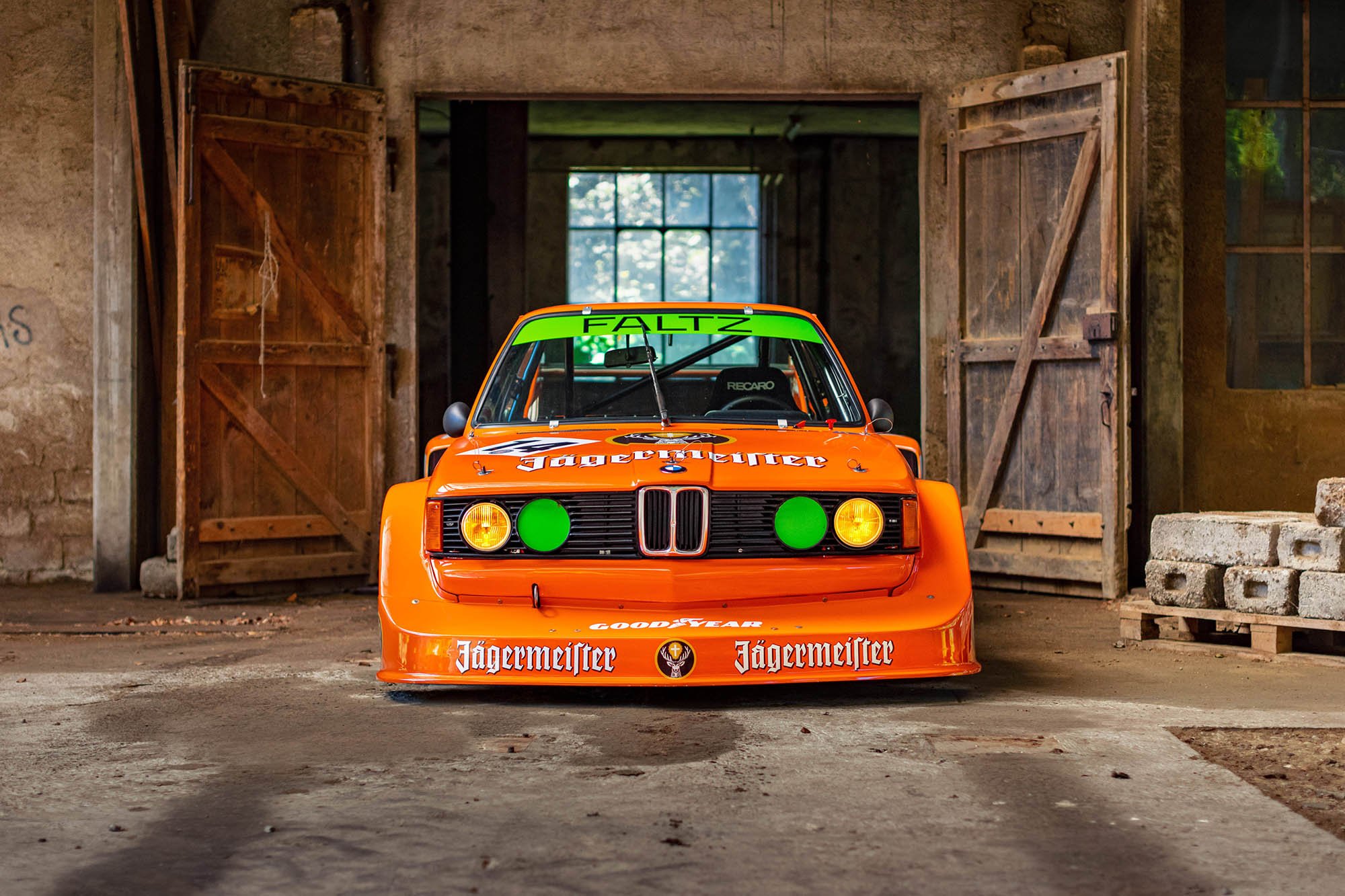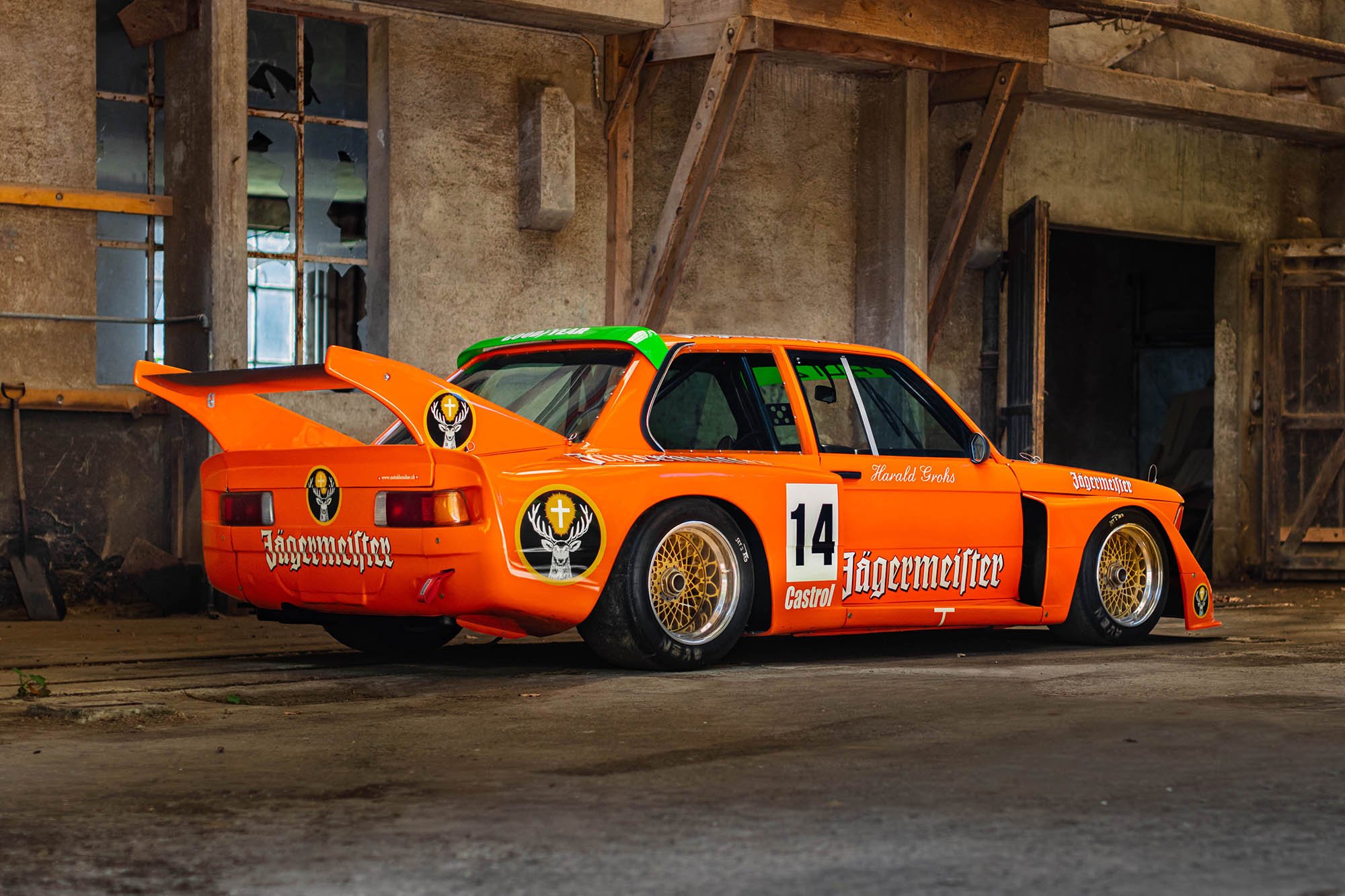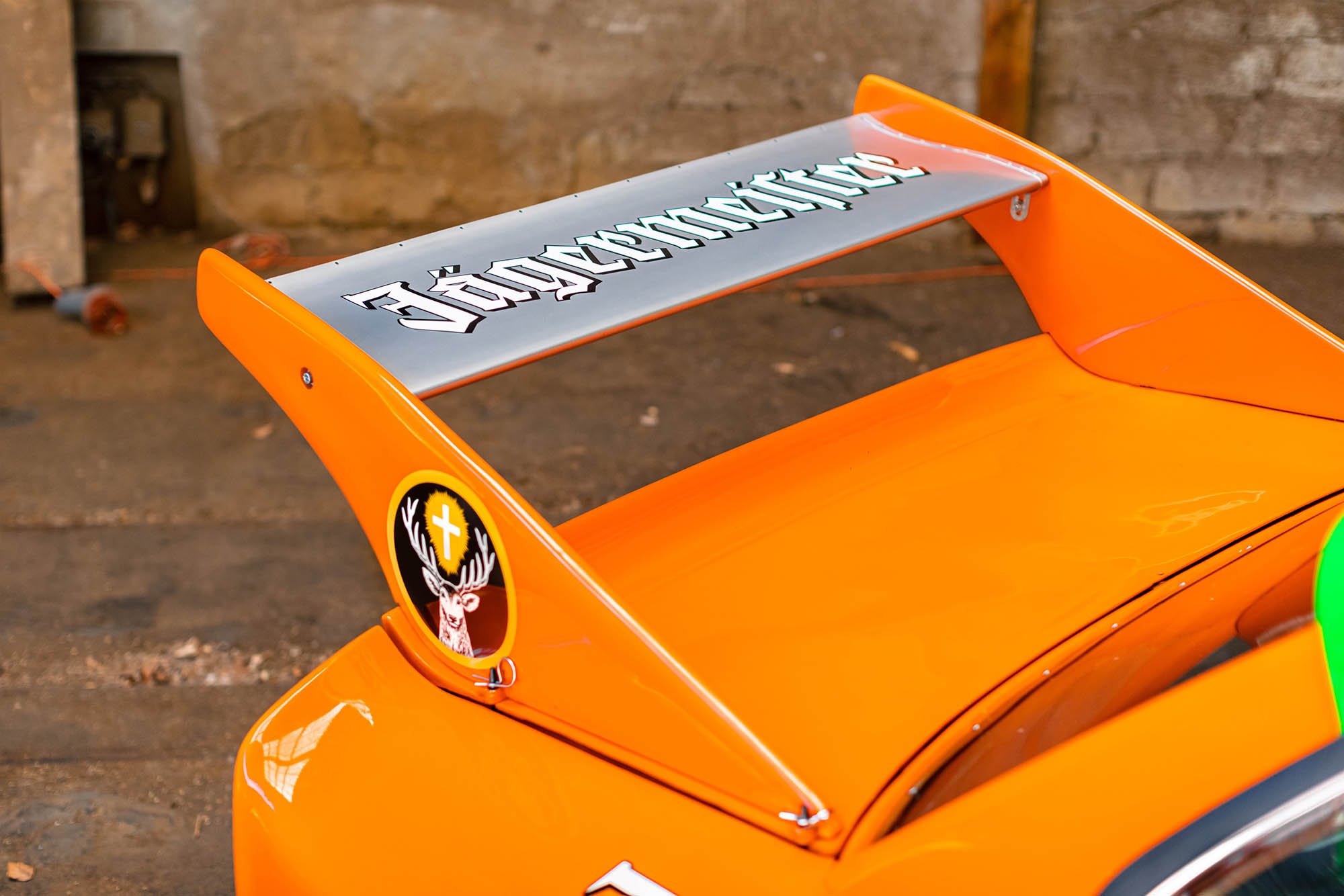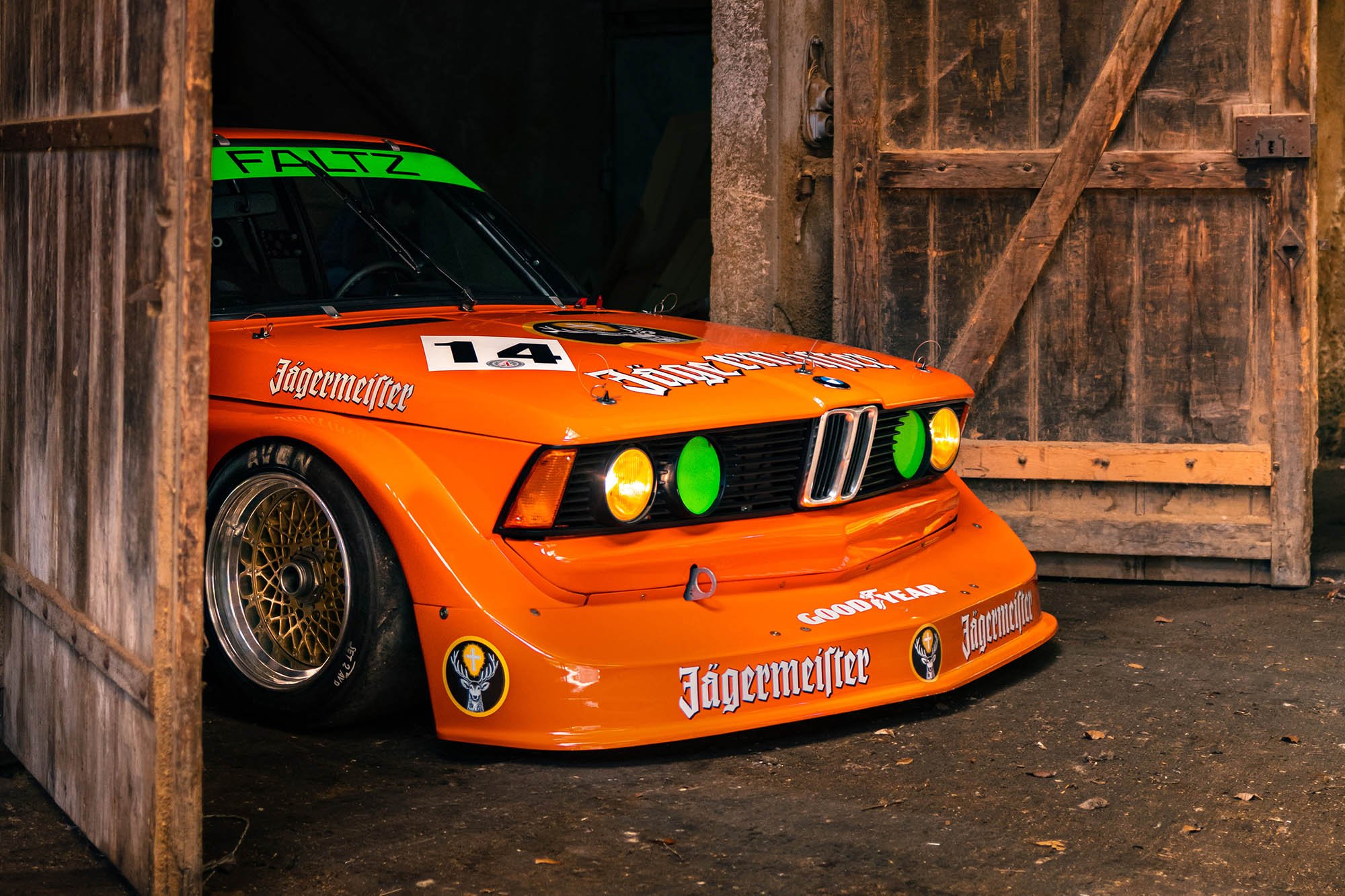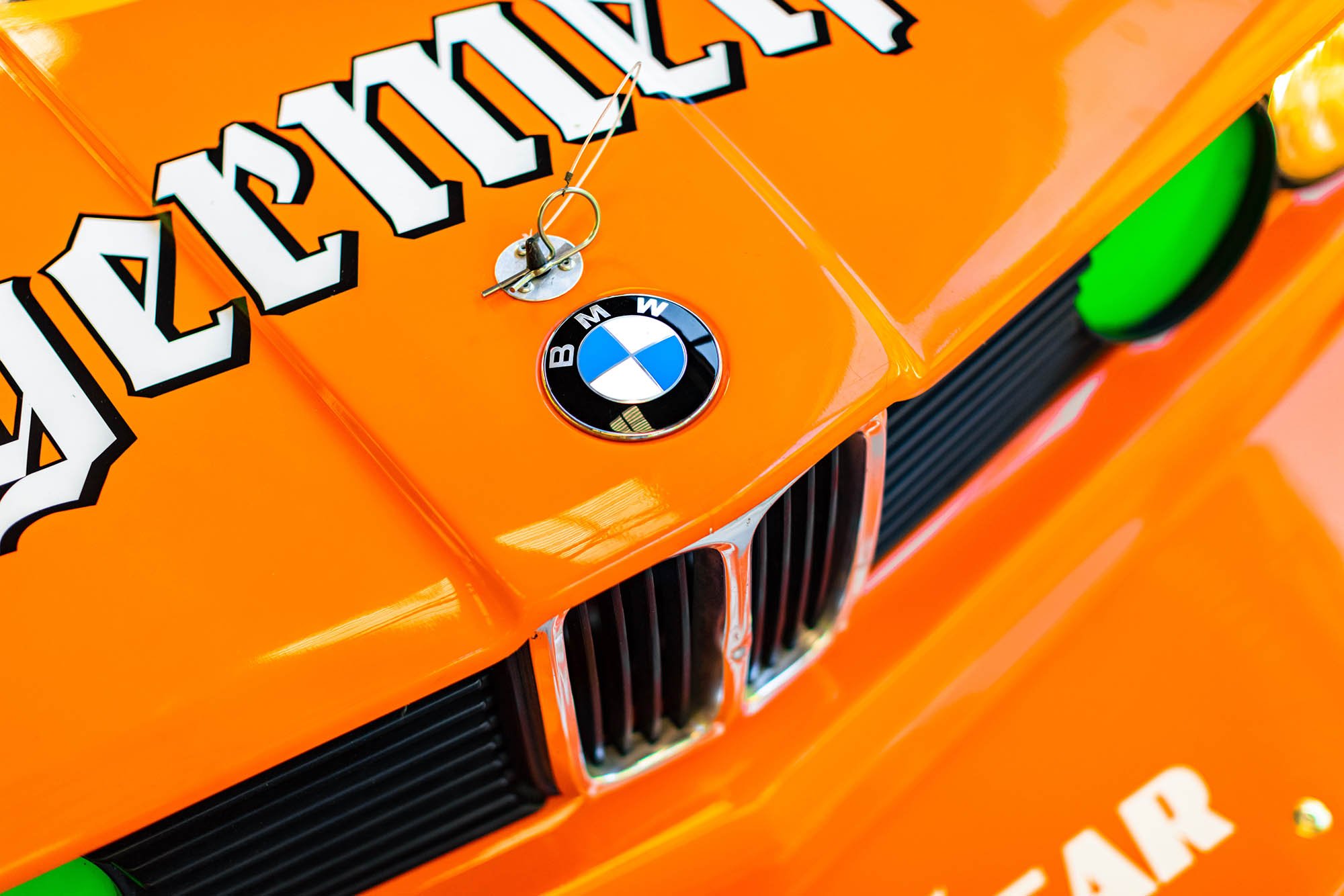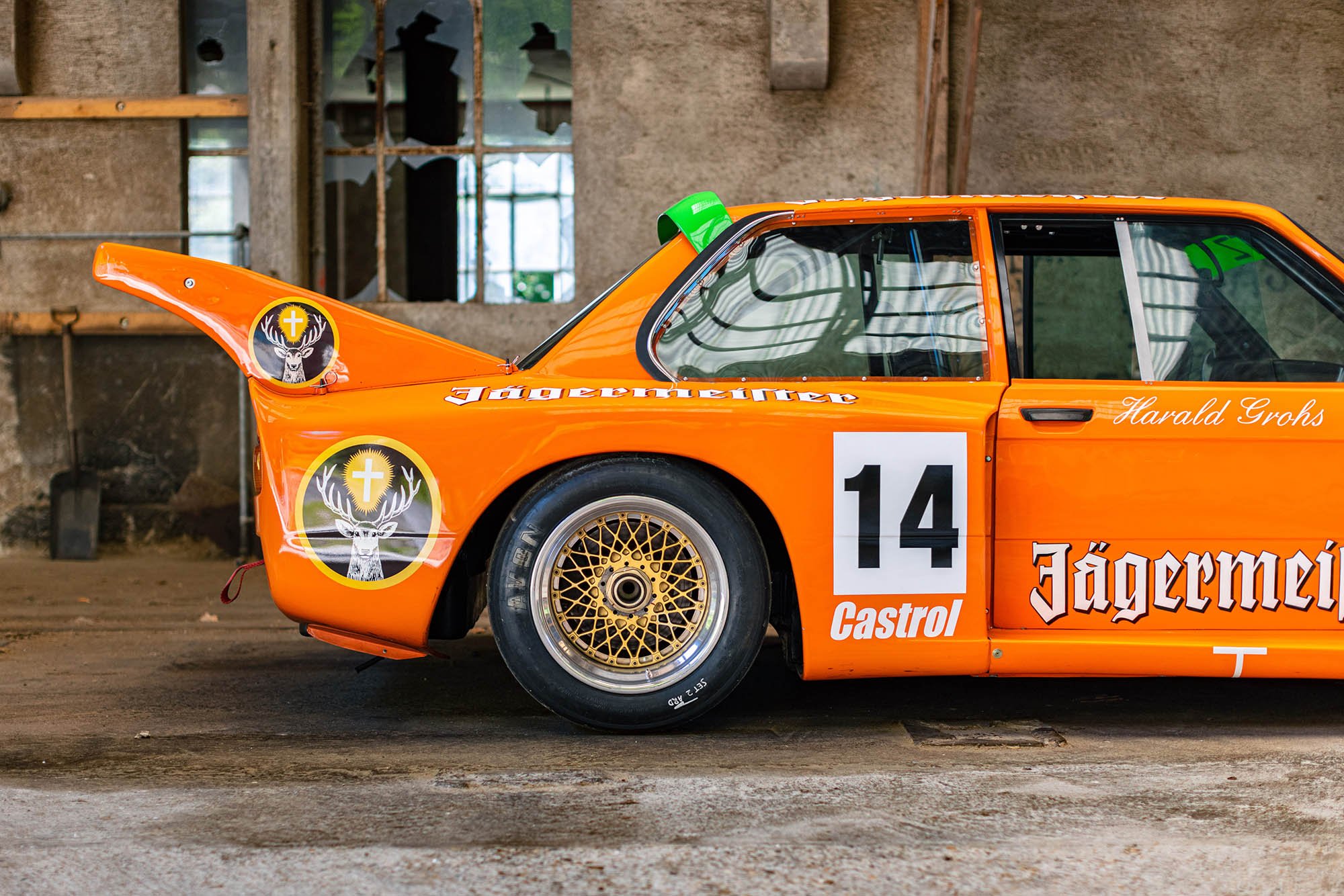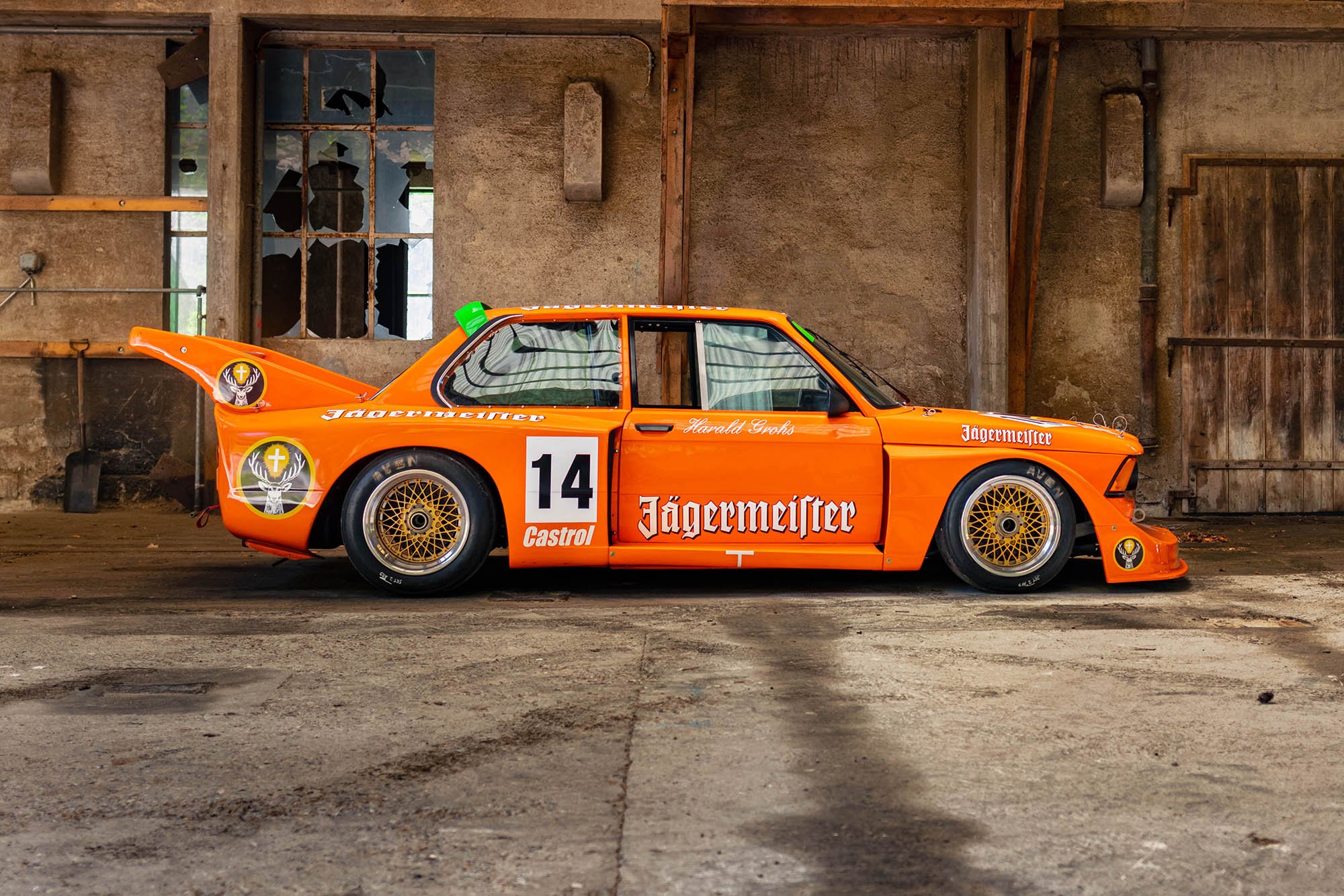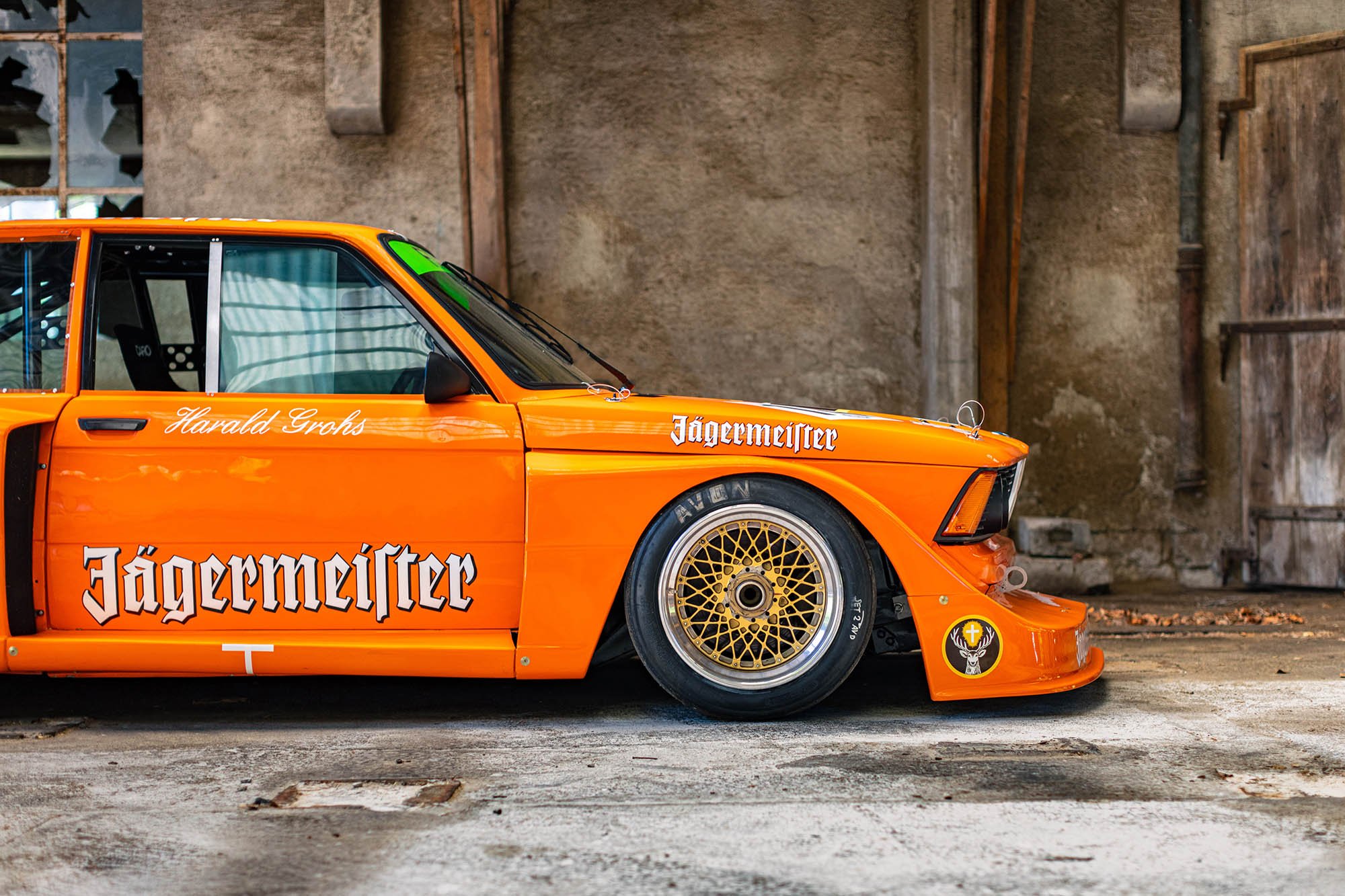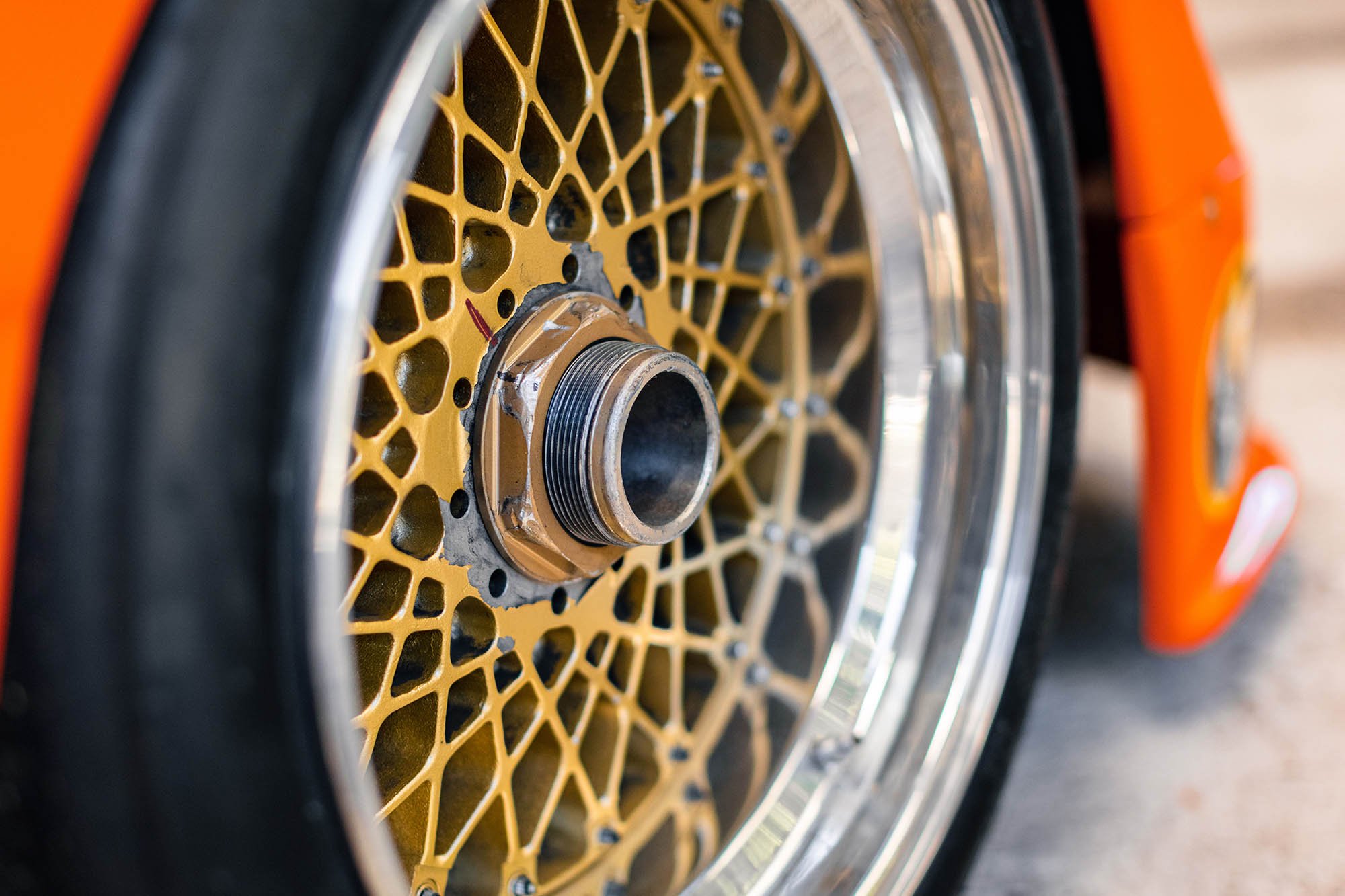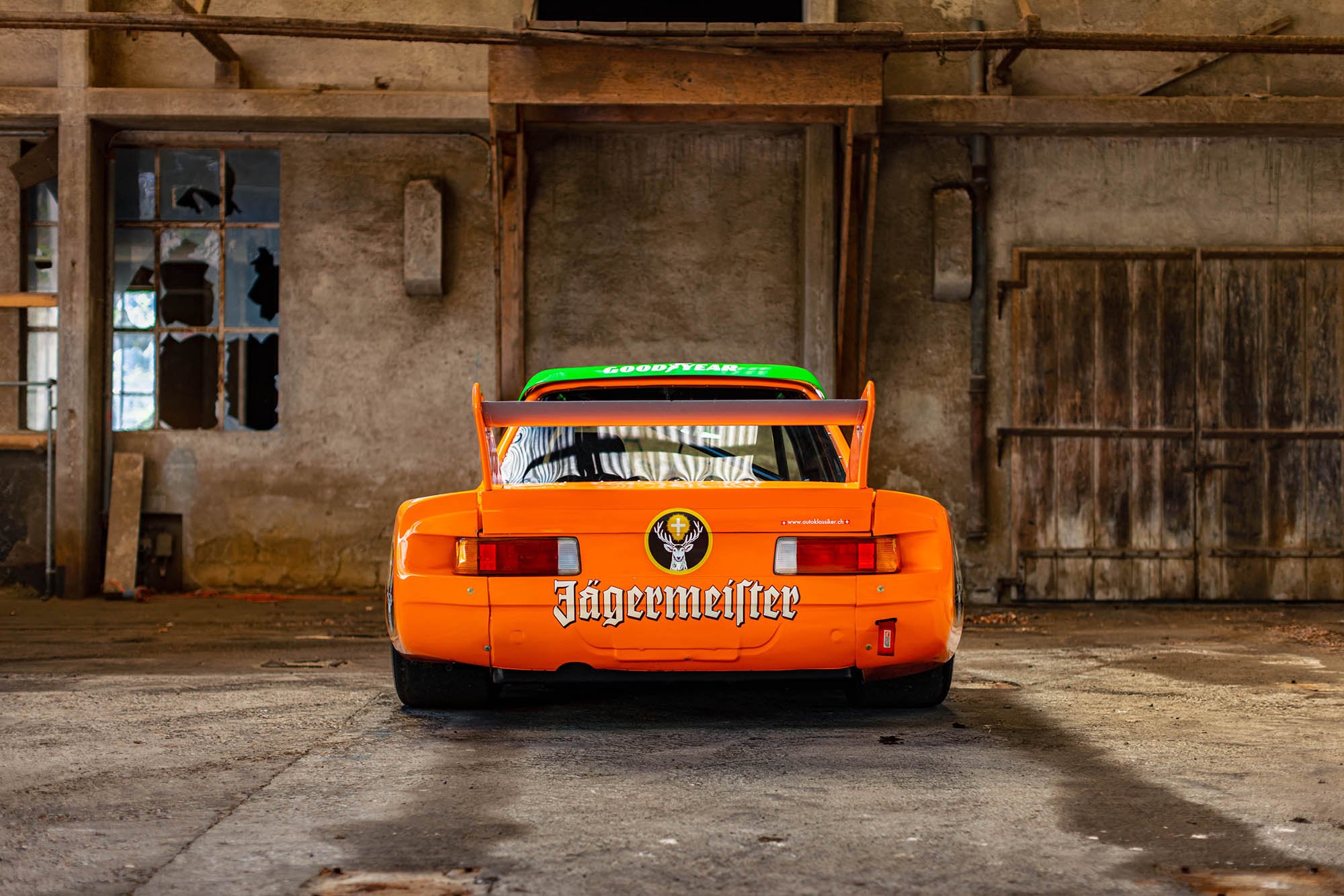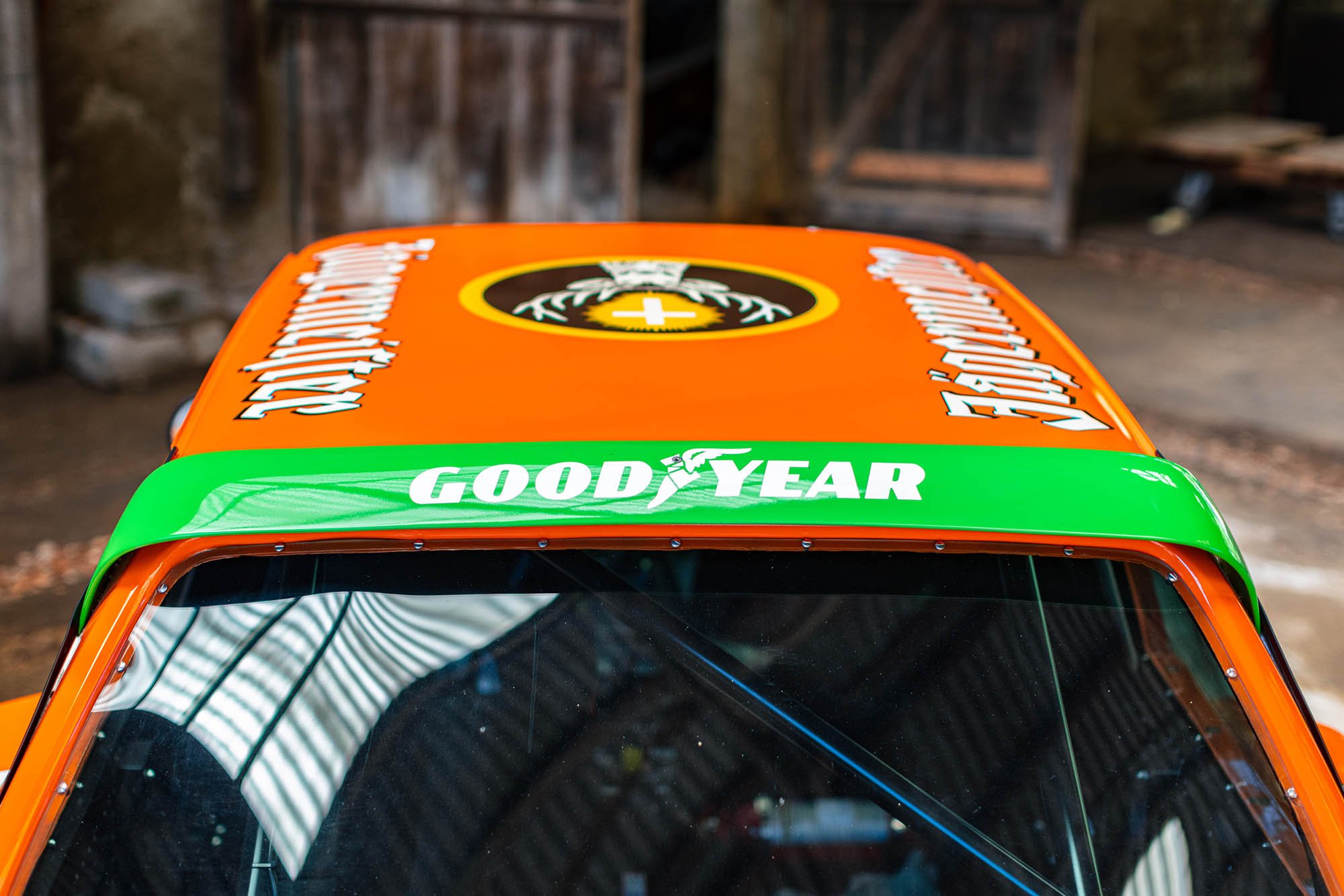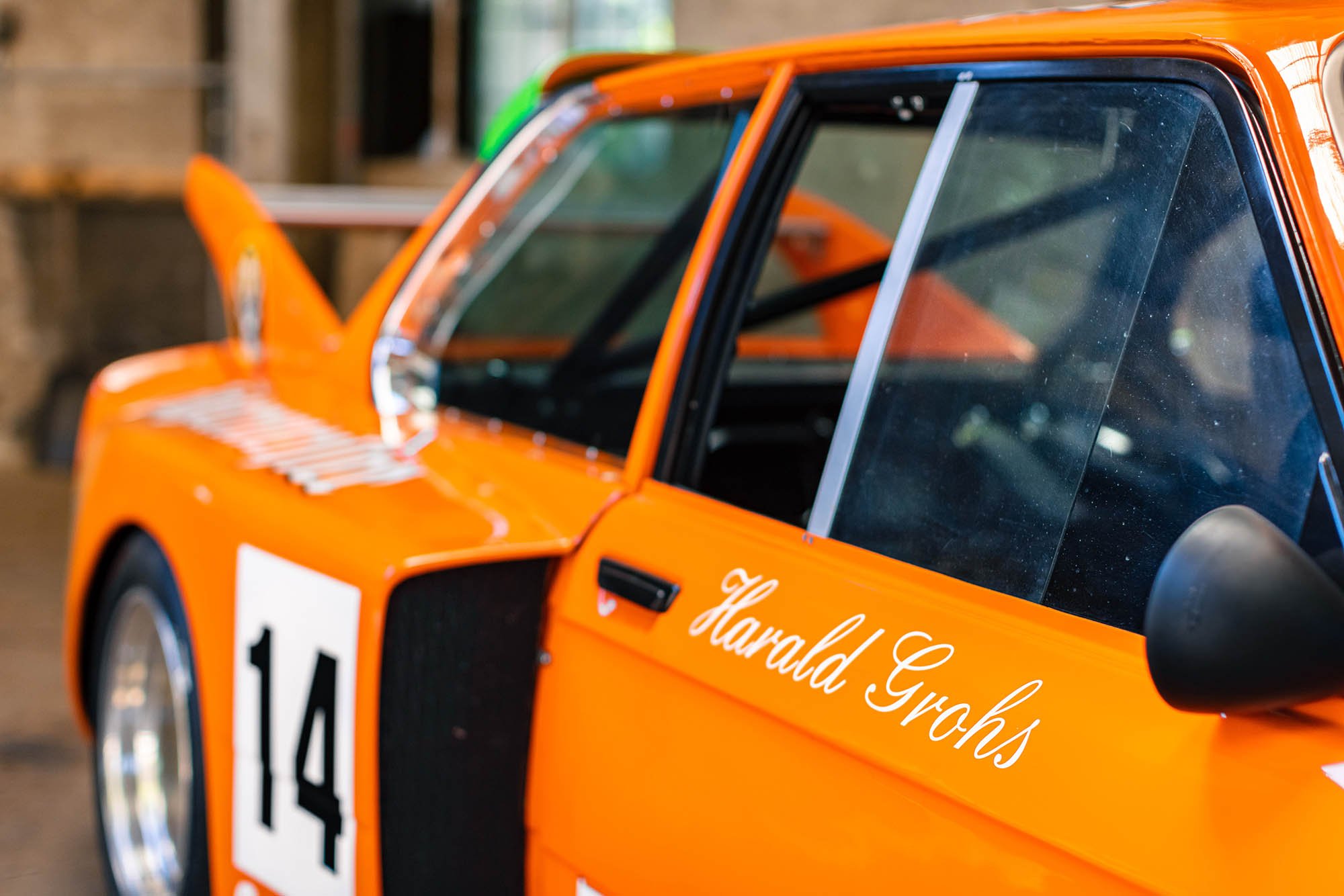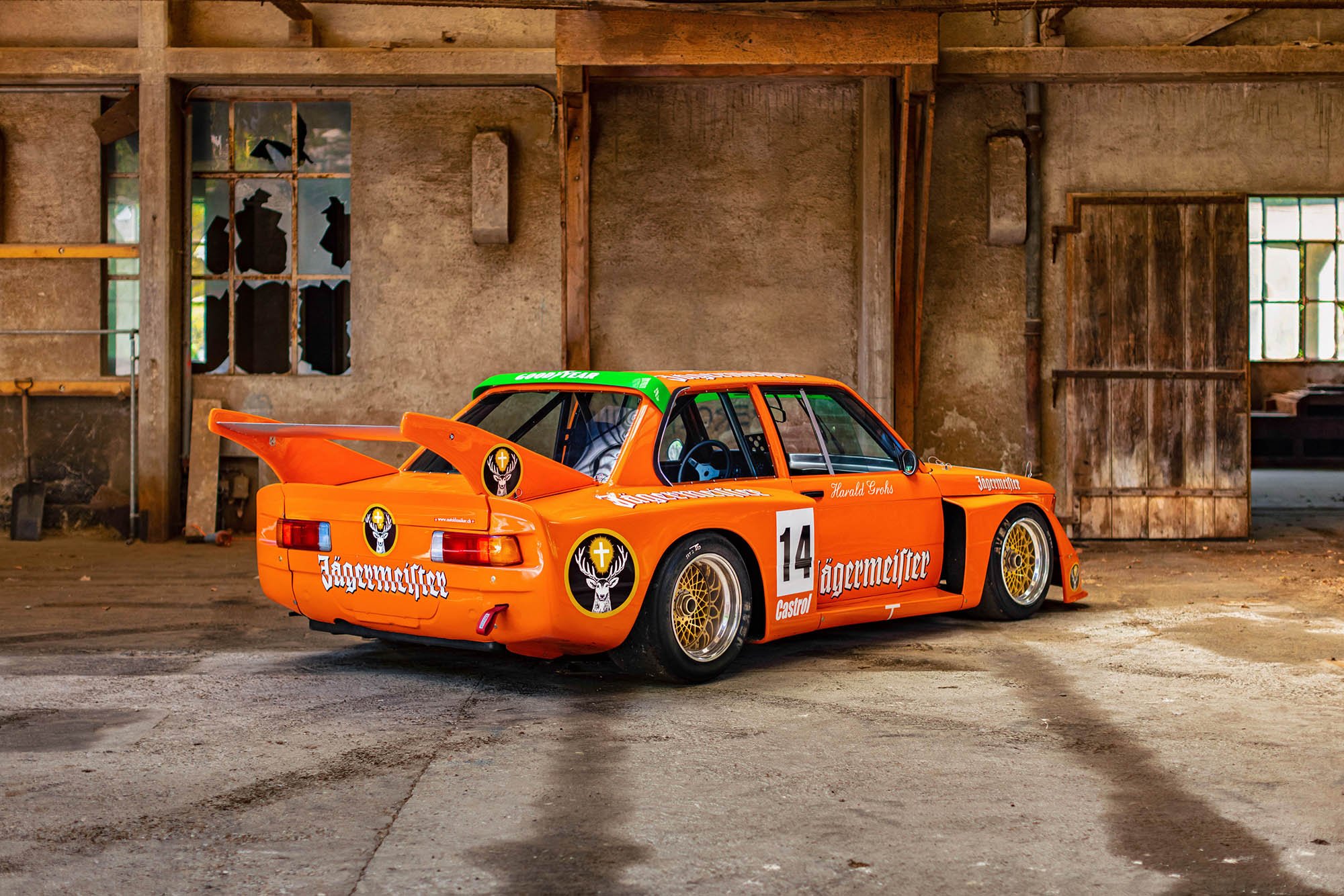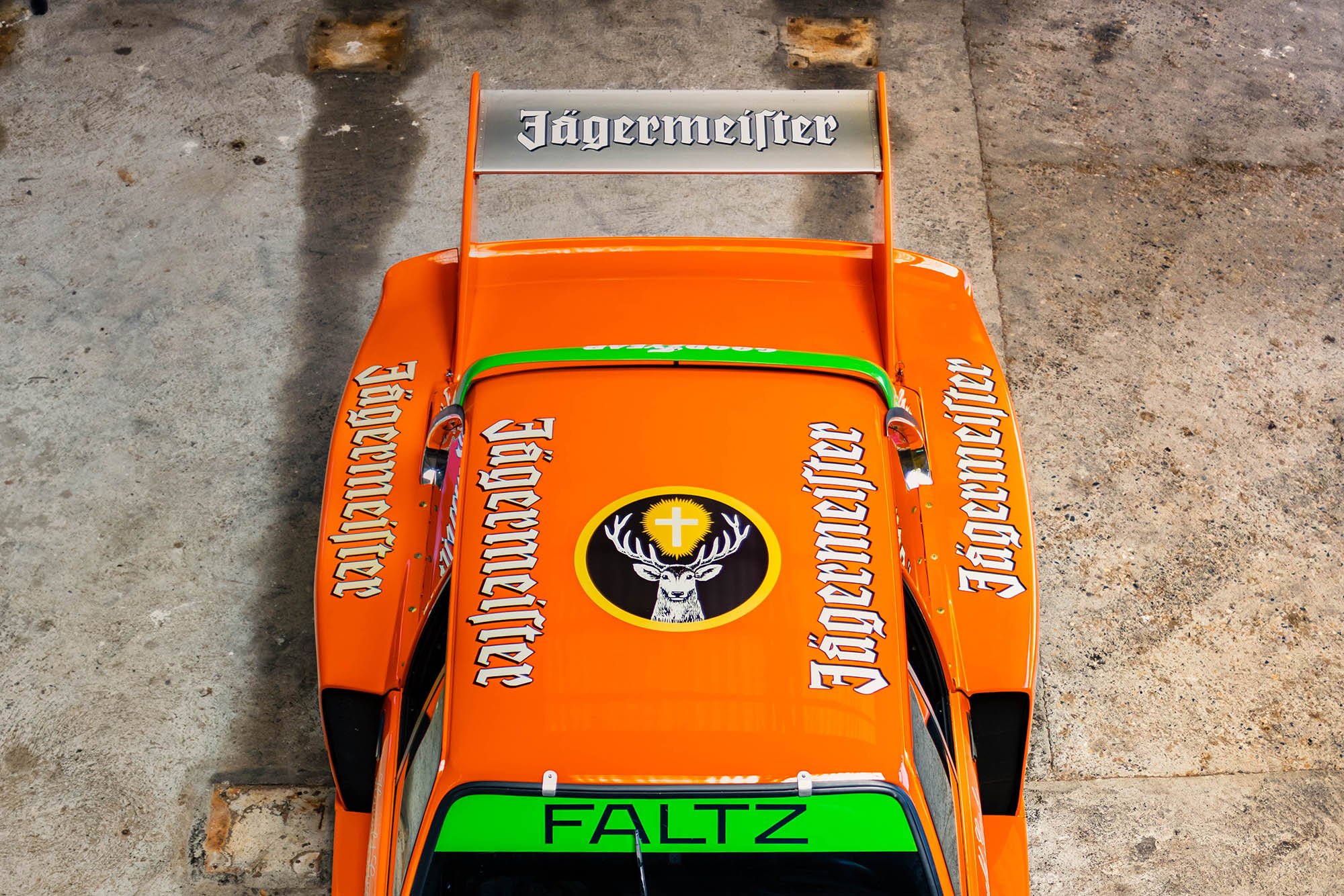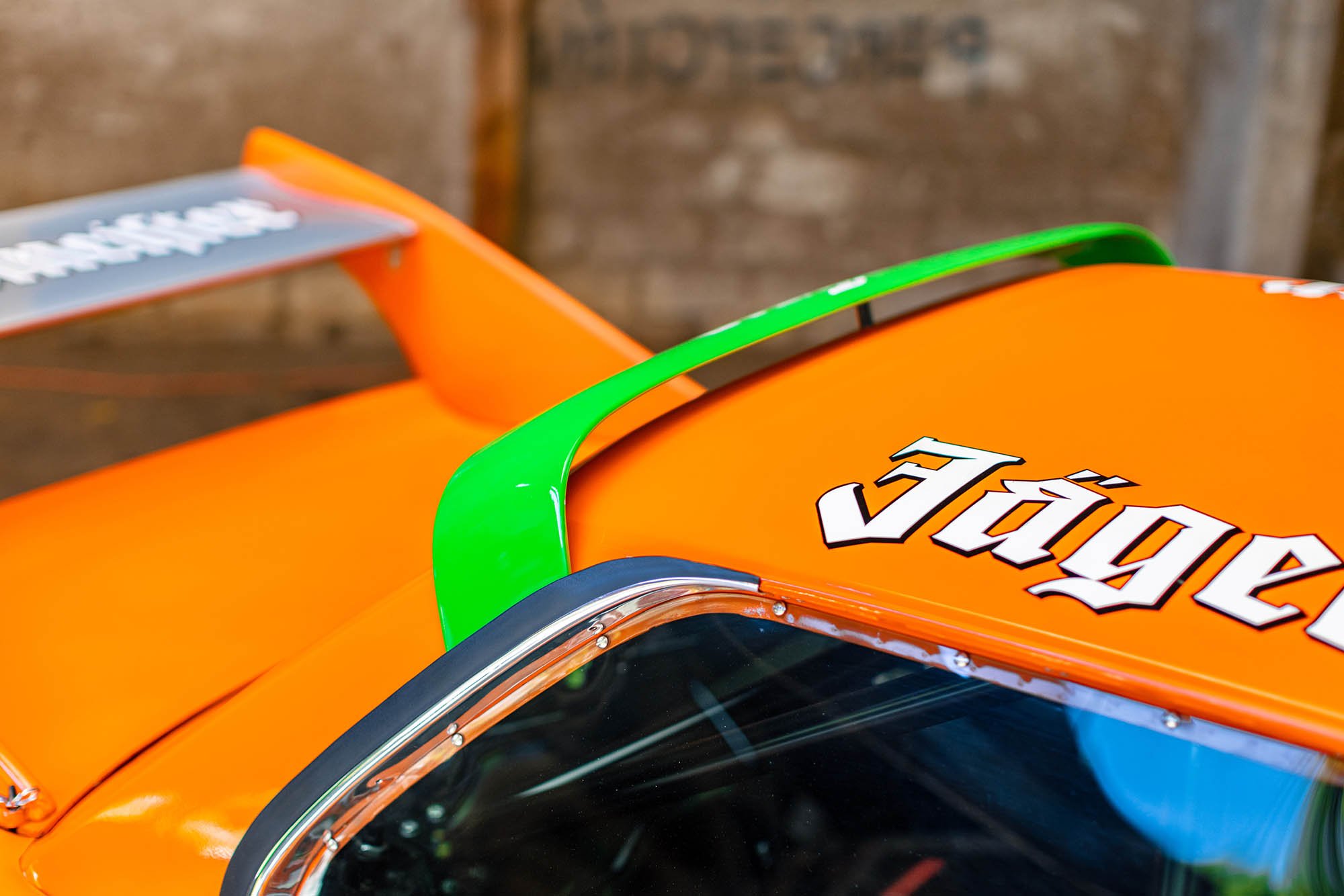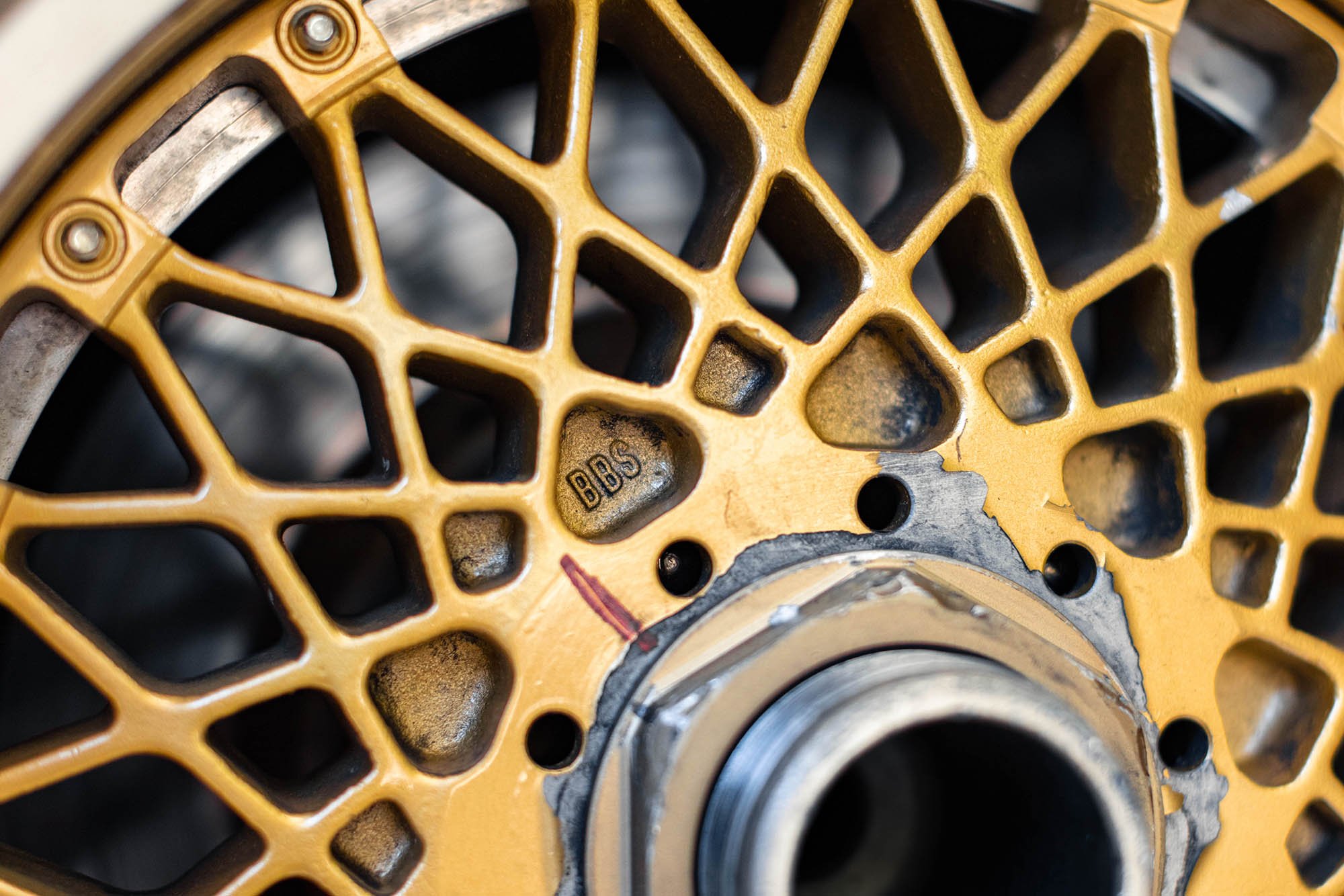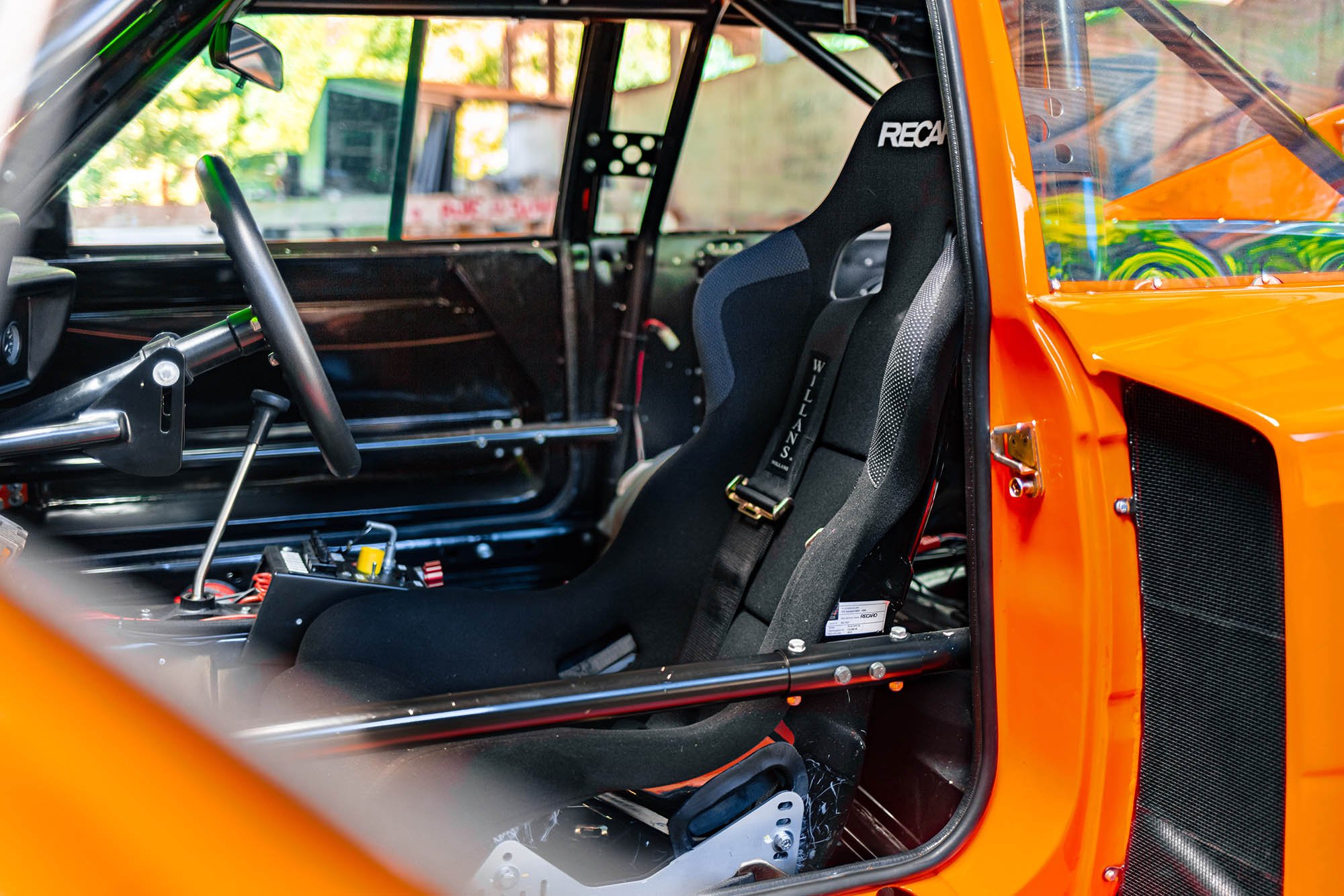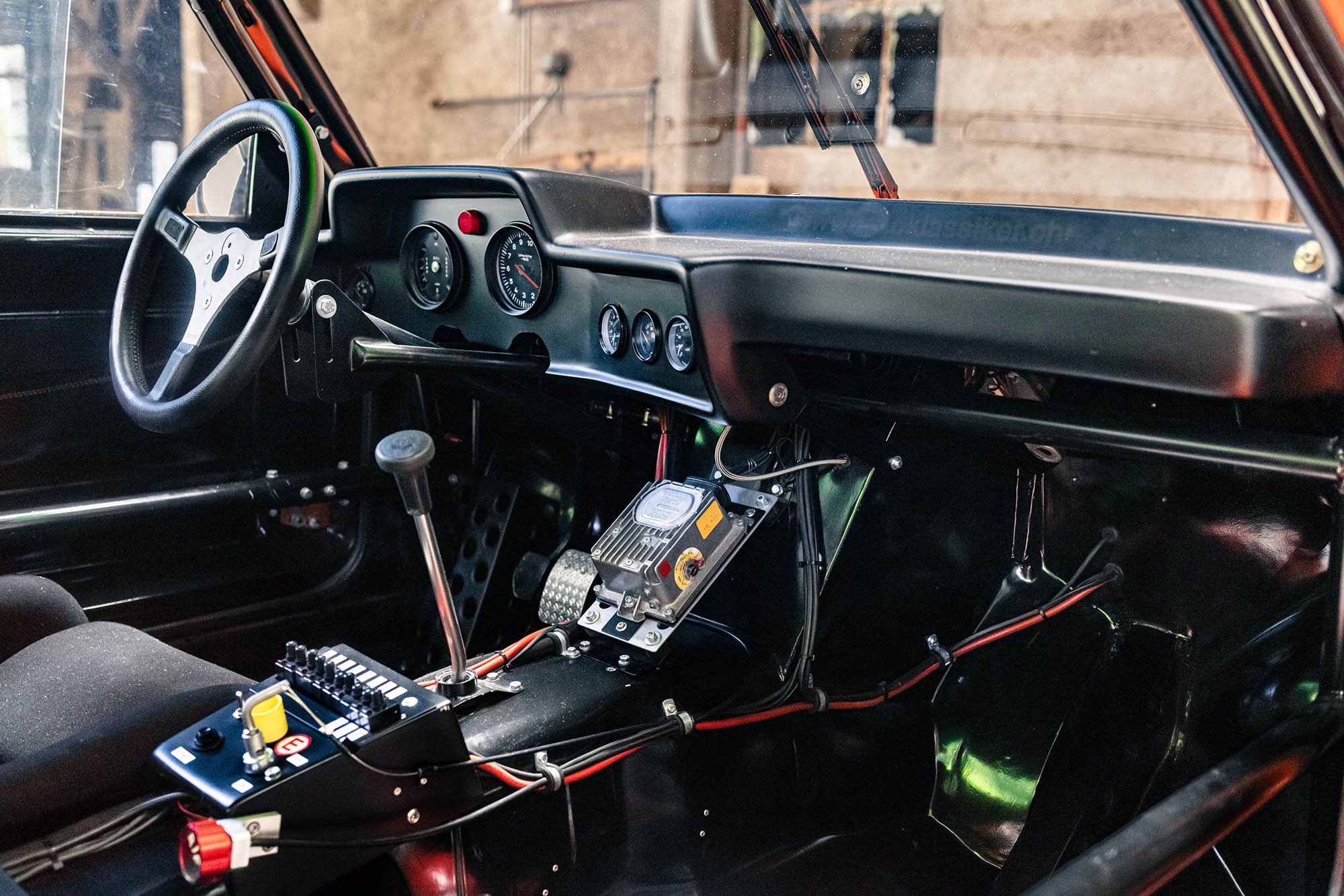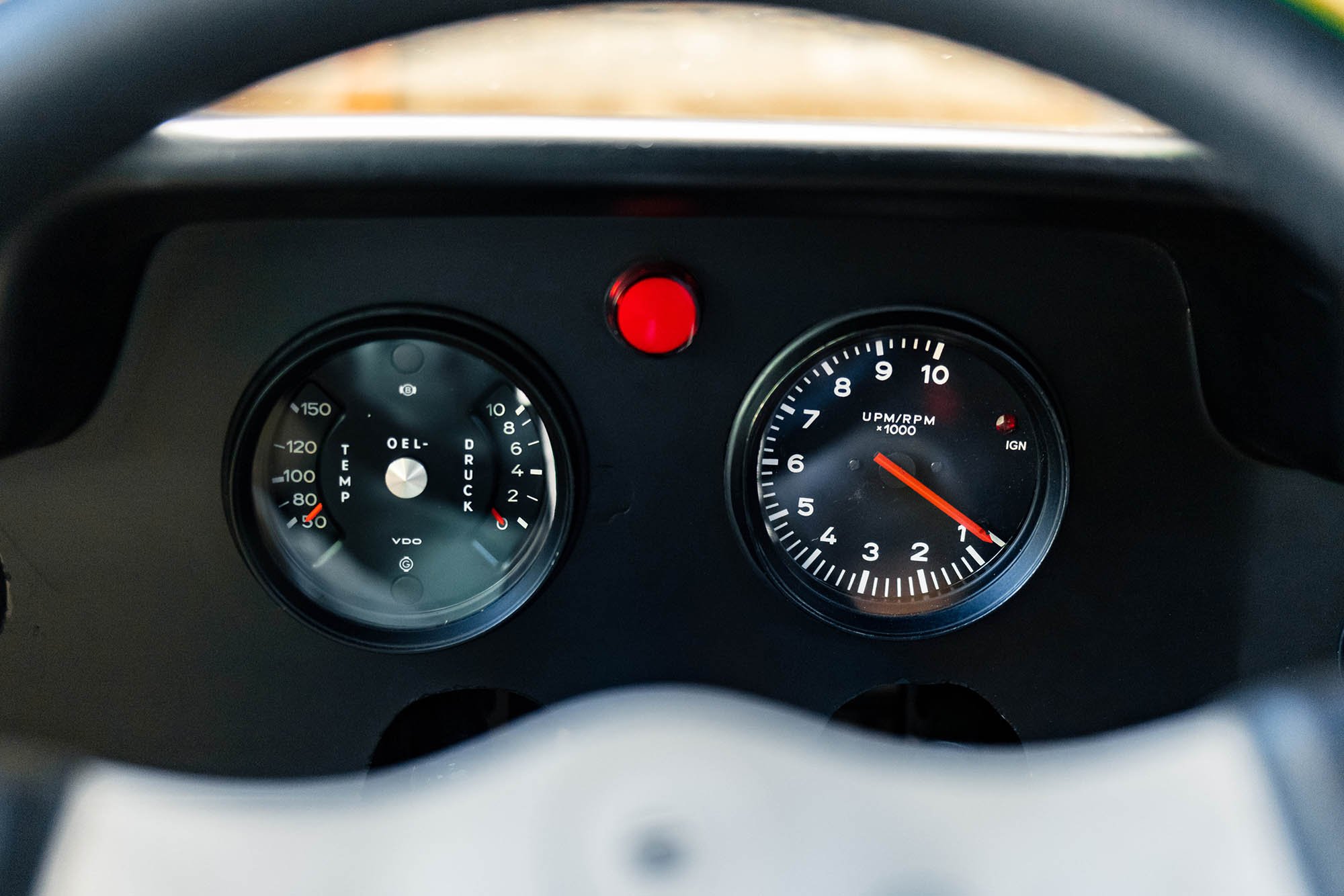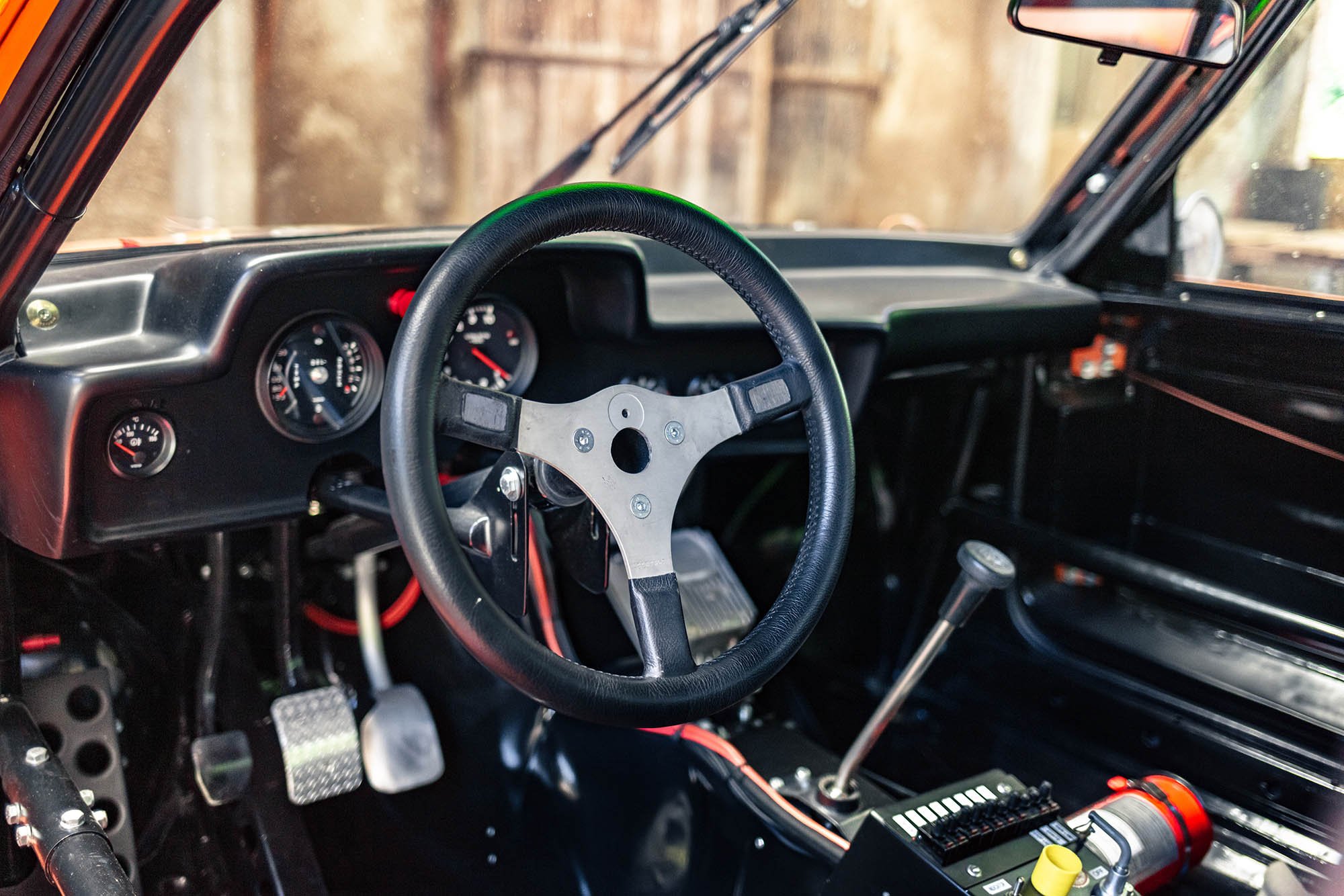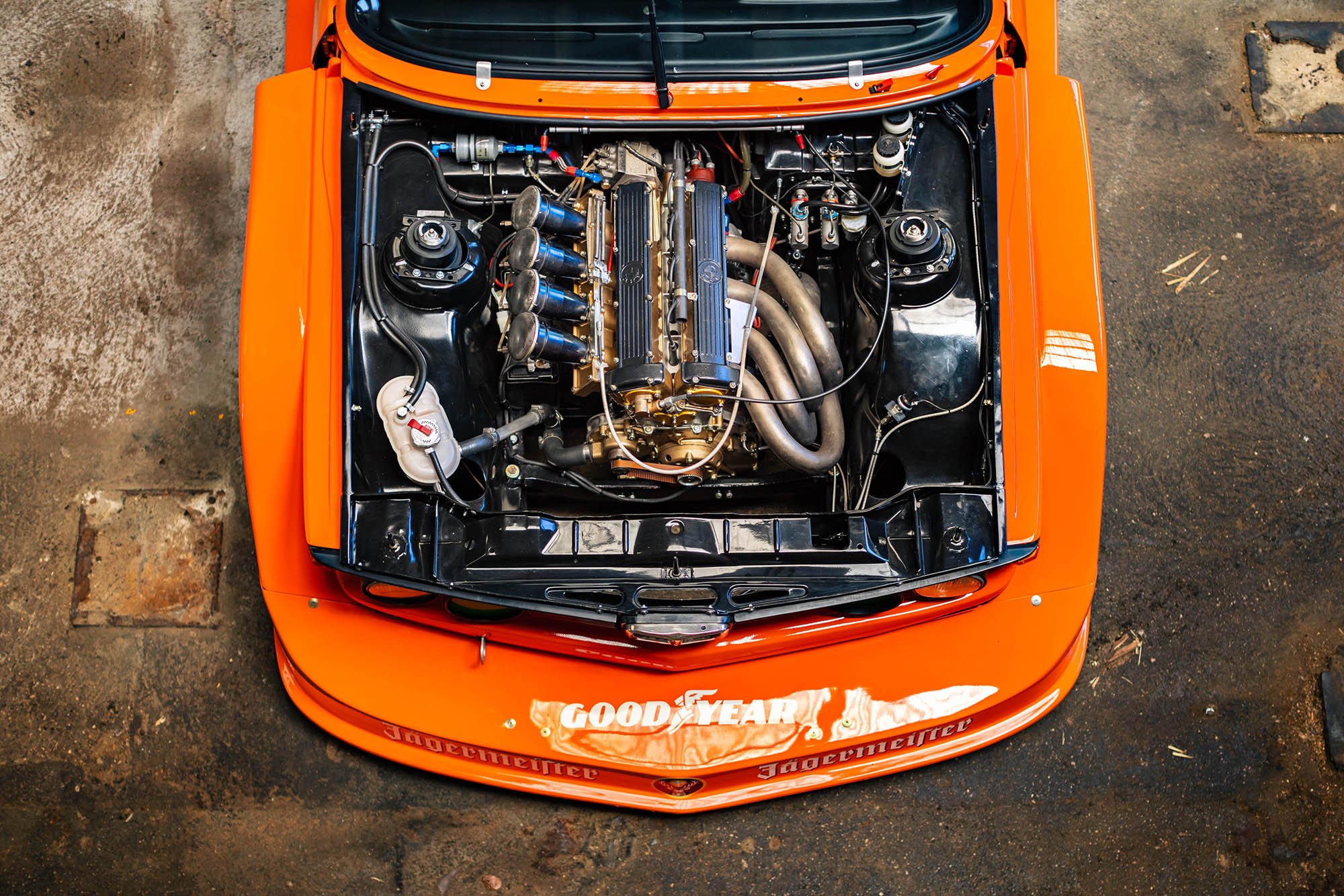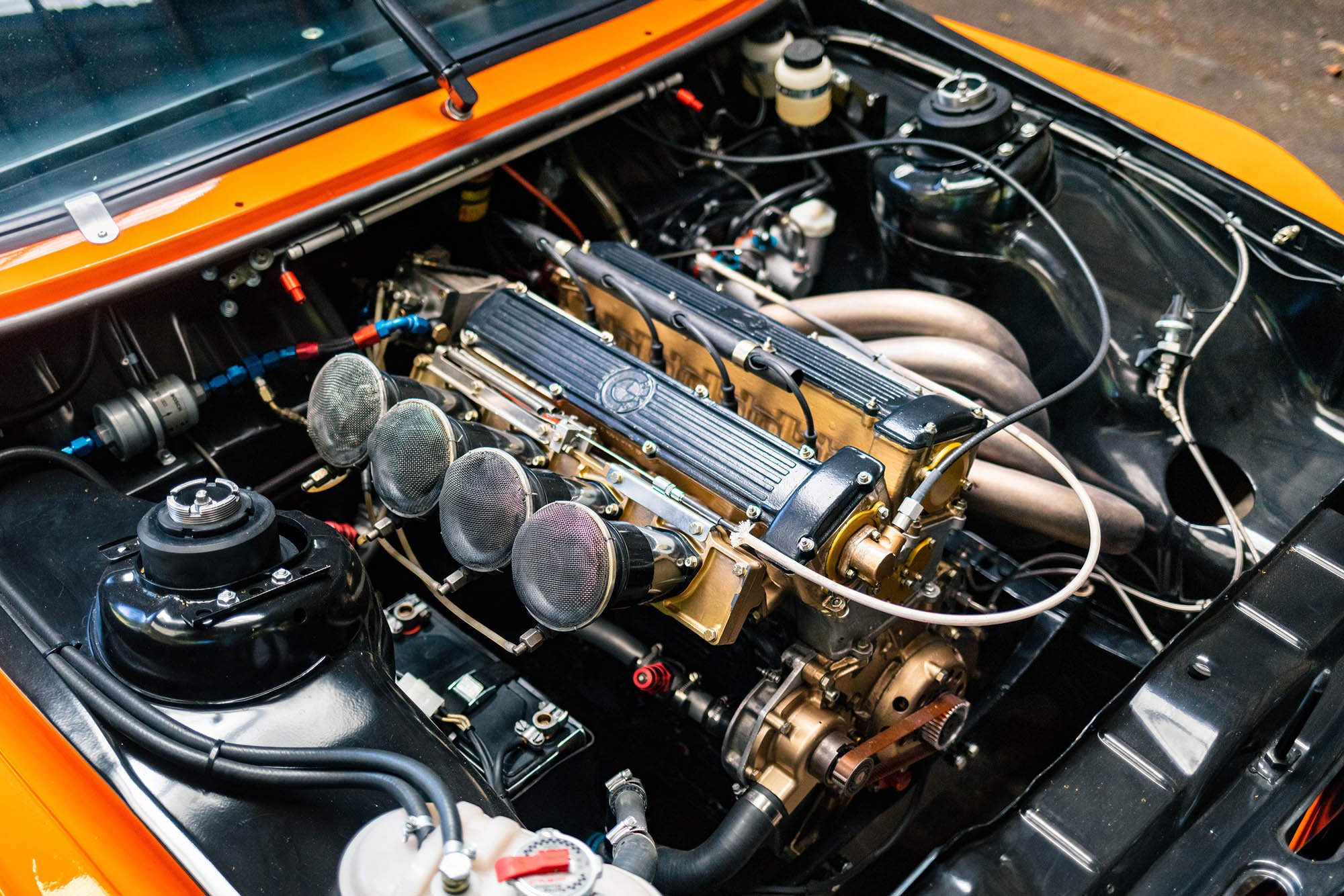The fire-breathing BMW
Few eras of motorsport have captured the imagination quite like the fire-breathing silhouette sports cars of Group 5, and none have lived as long in the memory as the 3-Series saloons fielded by BMW. Wearing now iconic liveries from the likes of Warsteiner, Fruit of the Loom, and John Player Special, images of these fantastic machines remain etched in the minds of race fans the world over, forever immortalised taking flight at the Nürburgring, flames spitting from side-exit exhausts, with swollen tyres barely contained beneath blistered arches. Undoubtedly the most evocative of this famous cohort were the brightly coloured orange-and-black Jägermeister liveried cars, which have since become the stuff of legend.
Similar to their roadgoing counterparts in profile alone, outrageous body kits with sweeping wings and asphalt-hugging spoilers were the order of the day. The regulations that allowed these incredible racers to compete came into force in 1976, as the Group 5 formula was applied to Special Production Cars, allowing for extensive modifications to be made to standard models such as the Lancia Beta Montecarlo, Porsche 935 and Ford Capri. Only the doors, bonnet and roofline needed to remain unmodified, giving manufacturers and privateers almost free rein when it came to styling and aerodynamics, while mechanically, loose restrictions led to widespread use of top-flight race technology.
One of the major manufacturers to lead the charge into Group 5 was BMW, which decided to contest the sub-2-litre category of the Deutsche Rundstrecken-Meistershaft and World Championship for Makes with the replacement for the outgoing Neue Klasse – the E21 3-Series. The cars were produced in both factory form and as a kit sold directly to privateer teams, and featured a modified bodyshell with wild aerodynamic accents reminiscent of the 3.0 CSL. Beneath the bodywork lay the suspension setup from the existing Group 4 ‘Batmobile’, while the production M10 engine was replaced by something altogether more exciting. At its heart lay the trusted and race-proven M12/7, an incredible four-valve, 330 horsepower, 1,991 cc four-cylinder engine borrowed straight from the firm’s Formula 2 programme – a firecracker of an engine that was capable of spinning to a spine-tingling 10,000 rpm.
After a reported 12 weeks of development, tests of the first prototype began in October 1976 at Paul Ricard, watched on by BMW’s own Jochen Neerpasch and, as the head of the only privateer team running a Group 4 CSL, Freddy Laufer of Faltz Racing. It would come as no surprise that the Essen outfit would field two factory-built racers for the E21 320’s inaugural season in 1977, each finished in the now iconic orange livery of Jägermeister. Of these cars, one was campaigned by Hans Joachim Stuck, while the example featured here was driven by Harald Grohs.
Grohs quickly gained a reputation for a flamboyant all-or-nothing driving style, but despite showing early promise in the opening round of the DRM at Zolder, where he placed 4th, the German driver was plagued with bad luck, failing to finish four of the 10 rounds and finishing the season outside the top 10. His best result came in the penultimate race on his return to Zolder, where he steered the car to a podium finish behind the two Works 320s of Manfred Winkelhock and Eddie Cheever. The car’s exploits at the Nürburgring were particularly memorable, captured in now legendary mid-jump photos that evoke memories of the heyday of Stuck and his flying CSL.
This iconic 1977 BMW 320 Group 5 is currently available from RM Sotheby’s Private Sales. Photos © Kevin Van Campenhout / RM Sotheby's.


